La ciutat de Roses (grec: Rhode) a Catalunya, fundada molt probablement el 776 aC, es va convertir en la base d'algunes històries notables que perduren des de l'antiguitat fins a l'actualitat. D'acord amb la seva germana grega, la ciutat de Rodes, Roses va viure moltes batalles i esdeveniments històrics. Després de segles d'oblit, la història d'aquest fascinant lloc s'ha tornat a conèixer.
Si creguĂ©ssiu que els grecs solien centrar-se en el costat oriental del mar Mediterrani, us equivocarĂeu. Els antics grecs eren famosos per la seva voluntat d'explorar el mĂłn. La naturalesa dels antics grecs Ă©s propera a la d'Odisseu, la curiositat del qual pel desconegut era tan forta com el seu amor per la seva pĂ tria. Per tant, els grecs, anessin on fossin, intentaven aplicar la notable cultura de la seva regiĂł. A mĂ©s, mentre exploraven el mĂłn, no tenien por i, de fet, es desconeix fins on van arribar. Alguns investigadors creuen que el llegendari JĂ son i els argonautes van viatjar a Sud-amèrica i van explorar l'Amazònia. No obstant això, la història sobre la ciutat coneguda com Roses no es basa en la mitologia, sinĂł en evidències portades de les excavacions.
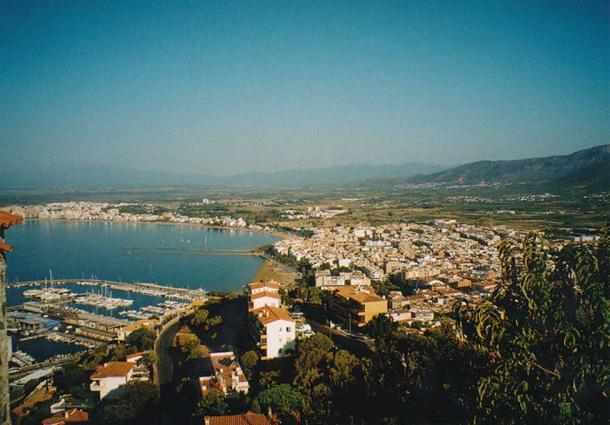
L'actual ciutat de Roses, Catalunya, Espanya. ( CC PER 3.0 )
La luxĂşria errant grega
La història sobre les antigues colònies gregues a l'Espanya actual, va començar molts segles abans que aquesta terra fos conquerida pels romans.
Els investigadors no coincideixen en els orĂgens de la ciutat de Roses. Segons la teoria mĂ©s comuna, un grup de colons de Rodes hi va arribar al voltant del 8th segle aC. Van portar el coneixement i les tradicions de Grècia a Espanya, inclosa la tecnologia utilitzada per crear la ciutat. A mĂ©s, sembla que al cap de tres segles els descendents dels colons de Roses espanyols van crear una altra ciutat: MassĂ lia, coneguda com a Marsella. És possible que unissin forces amb els ciutadans de la veĂŻna EmpĂşries per crear un nou assentament.
Segons la descripciĂł publicada pel MET Museum:
''Grècia Ă©s un paĂs envoltat d'aigua i el mar sempre ha jugat un paper important en la seva història. Els antics grecs eren navegants actius que buscaven oportunitats per al comerç i fundaven noves ciutats independents en llocs costaners a travĂ©s del mar Mediterrani. Als segles VII i VI aC, les colònies i assentaments grecs s'estenien des de l'oest d'Ă€sia Menor fins al sud d'ItĂ lia, SicĂlia, el nord d'Ă€frica i fins i tot les costes del sud de França i Espanya. Les escoles regionals d'artistes van exhibir una rica varietat d'estils i preferències en aquesta època. Les principals ciutats jòniques al llarg de la costa d'Ă€sia Menor van prosperar. Van conrear relacions amb altres centres benestants com Sardis a LĂdia que va ser governada pel llegendari rei Croesus al segle VI aC. De fet, en aquest moment, els grecs orientals controlaven gran part del mar Egeu i havien establert ciutats independents al nord al llarg del Mar Negre. ''
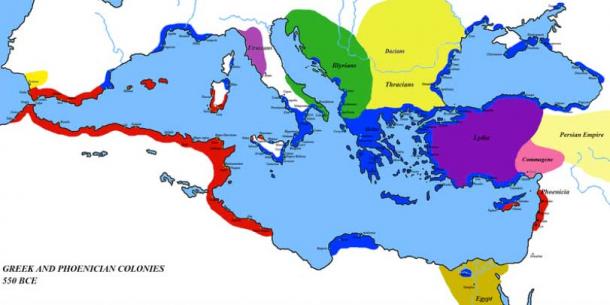
Greek (Blue) and Phoenician (Red) Colonies around 6th century BC. ( Public Domain )
In the Footsteps of the Greeks
After being conquered by the Roman Empire, the city was still a very significant part of the trade route. The most important works related to urbanization of the city by the Romans come from the 2nd century BC. With the arrival of Christianity to this land, the ancient temples were abandoned. Researchers unearthed an early Christian necropolis and the ruins of a paleochristian church.
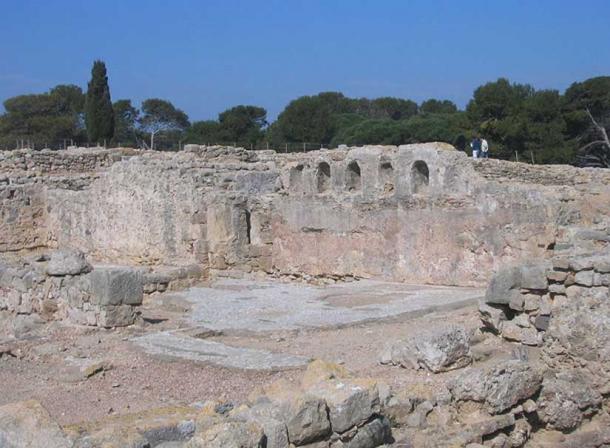
Paleochristian Basilica, ruins at Empuries. ( CC BY 2.0 )
However, with the end of the domination of the Romans, many people decided to leave the city and find safe harbor elsewhere. It was abandoned during the times of Visigoth domination, but a fortified settlement was located near the ruins, a hillfort.
Medieval Revival of Roses
The new chapter in the history of the city came during medieval times with the appearance of the remarkable monastery of Santa Maria de Roses. It was mentioned in sources dating back to 944 AD. During this time, the site faced many battles and other military activities, and with time it started to be populated once again.
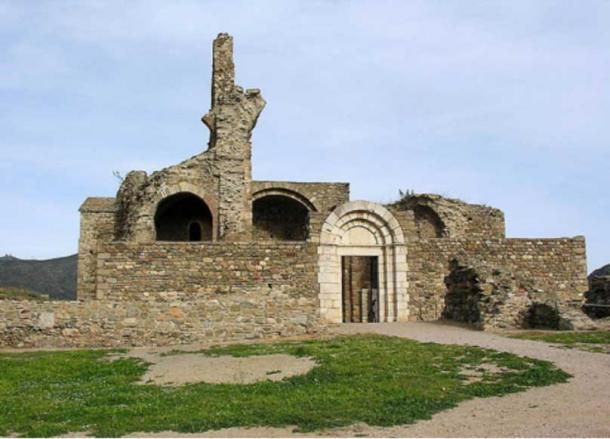
Chapel at the Monastery of Santa Maria de Roses. ( CC BY 2.0 )
The history of Roses is not well documented until 1402, when the county of Empuries, which included Roses, became a part of the Crown of Aragon. During the 16th century, the site of Roses faced attacks by privateers who arrived from North Africa. Some of them were also related to the Ottoman Empire. The admiral and former pirate, Barbarossa Pasha, plundered the city around 1543.
Due to the constant attacks, King Charles V decided to found fortifications. However, it didn't stop the pirates and Turks. The system of fortifications was finished during the reign of Charles’ son King Philip II. Nobody saw the ancient ruins as anything other than interesting artifacts and a source of stones.
During this period, it became part of a defense system connected with the Castell de la Trinitat. In the middle of the 17th century, French troops captured Roses, but in 1659 it became a part of Spain once again. Until the end of the French Revolution, Roses was an important place of battles between the French and Spanish. During the 19th century, the French didn't stop to ask for the rights to Roses, but finally, it fell within the Spanish borders. However, the impact of the French part of the history of Roses is still visible. After World War II, the city became a tourist center.
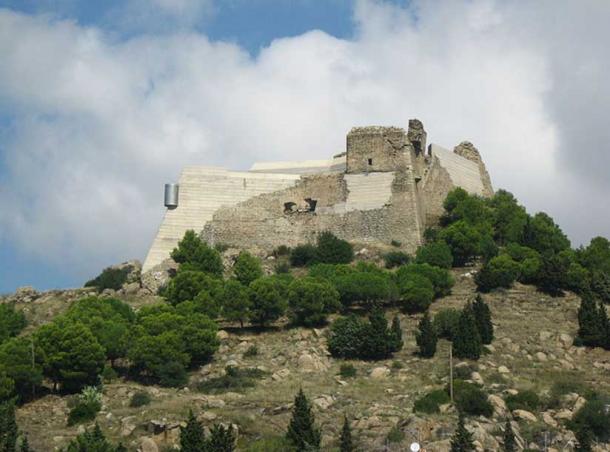
Castell de la Trinitat. ( CC BY 3.0 )
The City of Rhodes in Spain
Now the city of Roses and the nearby area is a center of historical attractions. There are two castles and many ancient sites of different sizes. However, researchers believe that the site still covers many secrets. As time passes, the technology used in the exploration of archaeological sites improves. Due to this fact, it is very likely that the upcoming years will bring new discoveries in Roses. The biggest problem in the exploration of the remains of this Greek colony is related to the protection of the heritage that has been uncovered before.
Top Image: Castell de Bufalaranya, Roses. Source: CC BY-SA 3.0
By Natalia Klimczak

Afegeix-hi un comentari: